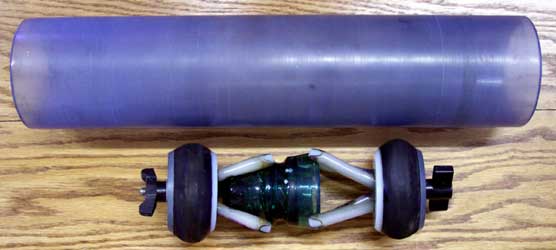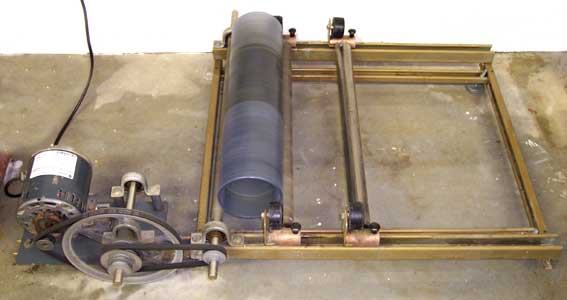I am writing this article to answer many of the Frequently Asked Questions associated with the practice of tumbling. Maybe you are interested in the process of tumbling or you have an insulator you have been thinking of getting tumbled but you have questions about the process. Tumbling began in the bottle hobby and made its way into the fruit jar hobby and then into the insulator hobby. The practice has been around for many years. I have been tumbling jars, bottles and insulators over five years now so this article is written from my personal experiences.
It is my belief that collectors should always try hand cleaning an insulator before submitting it to the tumbling process. Here are a few examples of ways I clean an insulator.
First off, you should try soapy water and a cloth. This will remove dirt and some light staining. If the insulator has mineral deposit staining, I have found that LIM-AWAY works really well. If the insulator has trains soot or even light rust staining, I use a lye solution to clean them. The details of this procedure along with a couple alternative cleaning methods can at Cleaning Your Insulators.
So, you have tried all the above-mentioned cleaning techniques and your insulator still does not come clean. Maybe it is time to try tumbling it.
Here is a list of the most Frequently Asked Questions (FAQ's) concerning insulator tumbling:
Q: How much does tumbling cost?
A: Most professional tumblers charge between $10 and $20 per
piece depending on the amount of time needed to fully clean. The
customer is usually responsible for S&H both ways.
Q: How long does the tumbling process take?
A: Depending on the condition of the insulator it can take
anywhere from 3 to 7 days.
Q: How does the tumbling process work?
A: The tumbling process involves suspending the insulator inside a PVC or acrylic cylinder by the use of stopples.

The insulator is seated against the bottom stopple and then tiny bits of copper wire are added along with water and the polishing compound.

The canister is then loaded onto the machine where the tumbling process begins.

Q: What types of stains will tumbling remove?
A: Tumbling will remove mineral deposits, etching, and rust
stains.
Q: Will tumbling remove scratches?
A: Tumbling will only remove minor scratches without affecting
the embossing.
Q: Will tumbling affect the embossing?
A: If tumbled properly tumbling will NOT effect the embossing.
Always use a trusted tumbler!
Q: Can any insulator be tumbled?
A: No. There are size limitations and certain types of glass that can't be tumbled. The largest insulator most tumblers can safely tumble will measure 5 1/2" at its widest point. You should never tumble flashed amber or carnival glass as both types are coated. Also "soft" glass such as Hemingray E-14 B's and tempered glass such as Pyrex's are not recommended to be tumbled.
Q: Is tumbling an accepted form of cleaning in the insulator hobby?
A: Yes. Tumbling is a save and effective way to clean an
insulator. However, extensive tumbling, which removes embossing, drip
points, or disfigures an insulator, is viewed as an "altered insulator"
by the NIA.
Q: What happens if the insulator breaks during the tumbling process?
A: Most tumblers have the same policy I use which is as follows. All insulators are tumbled at customer's risk. Customers are asked to carefully inspect the insulator and note any chips or cracks to the piece. Once the piece has arrived to the tumbler it is usually inspected again to make sure the piece is worthy of tumbling and no damage occurred during the shipping process. There is always a 1% chance of breakage during the process. I have tumbled bottles, fruit jars, and insulators for over 5 years now and have not had and breakage.
Here are a few before and after pictures of insulator I have tumbled.


I hope that this article has enlightened you on the process of tumbling. If you still have questions feel free to contact me.
Chris Childress
NIA #7452
http://www.spec-tru.com
The following people do tumbling. This is not an endorsement of any of these people and the list is presented "as is" for your information.
Chris Childress, from Riner, VA
Denny Hackthorne, from Riverside, CA
![]() Return to the Taking
Care of Your Insulators page
Return to the Taking
Care of Your Insulators page
If you have questions or comments, please use this Feedback Form.
Last updated Monday, July 18, 2005